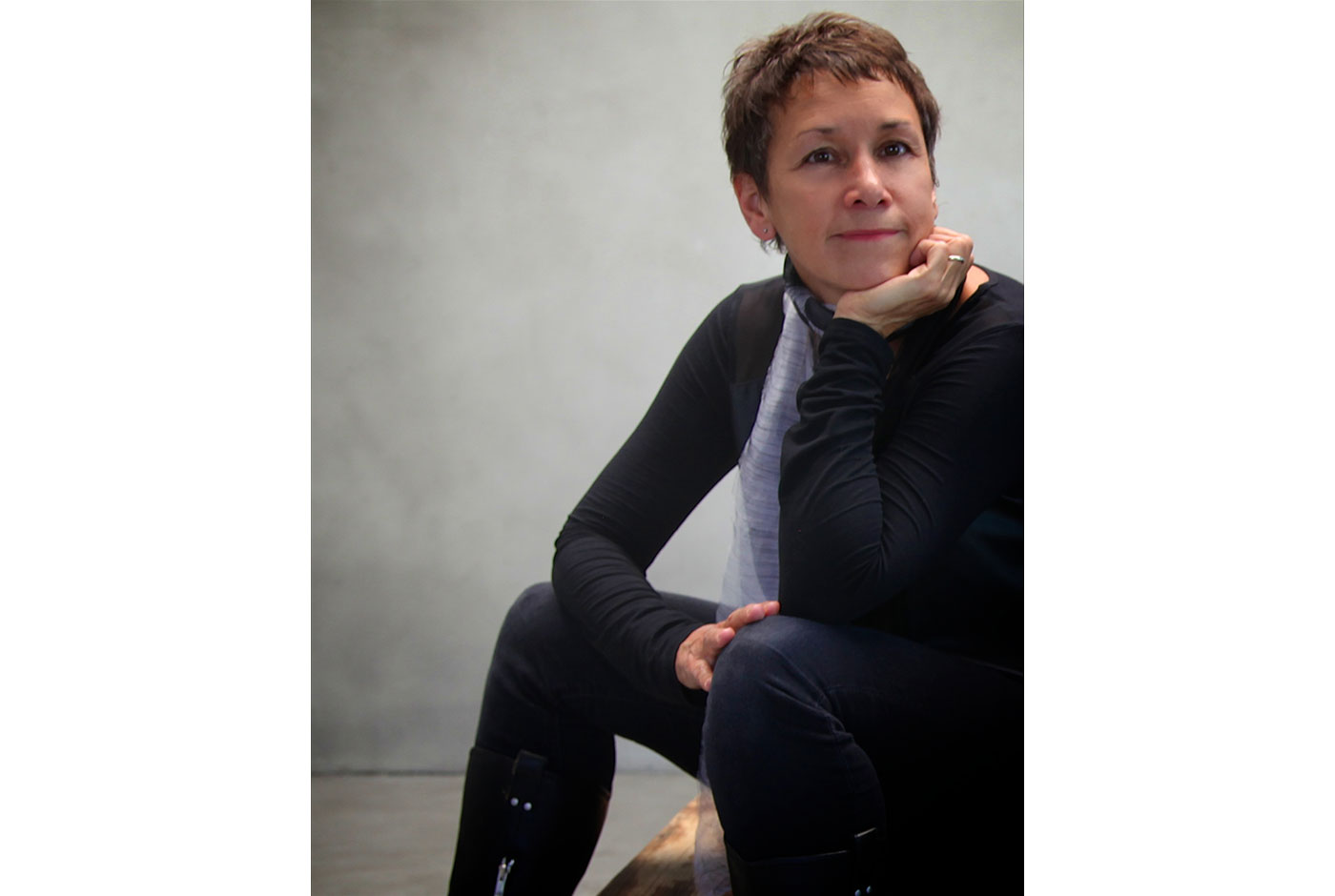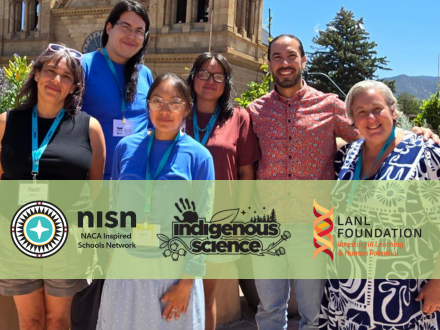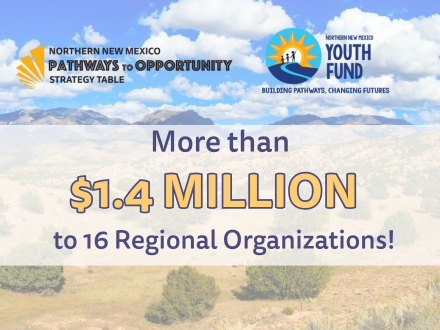Agnes Chavez is the founder of the STEMarts Lab, a research and development platform made up of an interdisciplinary team of artists, scientists, philosophers, and cultural specialists. Their work can be seen all over the world from Portugal to Mexico. Based in Taos, NM, the mission of Agnes and her team is to bring new technologies and ideas to diverse communities, addressing the digital divide; to move students from being passive consumers to active cultural producers using technologies to produce meaningful content.
Her team asks the question, “Addressing what is now known as the ‘knowledge divide’ and the ‘culture divide,’ how can we create opportunities for the diverse voices of our community to be heard?”
Q: In your own words, tell us how you arrived where you are now as an interdisciplinary artist and educator?
A: I have been working as a professional artist since 1984 when I graduated from the California College of Arts & Crafts. My work has always explored the relationship between science & art, and nature & technology, but it was in 2009 that I collaborated with Jared Tarbell, to create my first interactive projection art installation, called the (x)trees, a dynamically generating forest of trees created by SMS and Tweets from the audience. People send messages that generate branches of trees projected in real-time onto buildings to raise awareness of deforestation and climate change. It was at that time that I started collaborating in interdisciplinary teams working with projection art and data visualization to create participatory art. I also began the development of STEAM programs in collaboration with festivals to build sci-art modules around the work of new media artists. As a curriculum developer, my work began much earlier in 1996 when I developed SUBE, a curriculum to teach Spanish through art, music, and games for elementary grade students—turning 25 next year!
Q: What are you questioning/exploring through your practice right now?
A: Thanks for asking that question. The STEMarts Lab is foremost a research and development platform made up of an interdisciplinary team of artists, scientists, philosophers, and cultural specialists. We are always investigating innovative strategies and teaching tools to push the boundaries of what is possible when you integrate art, science, and technology to engage youth in interdisciplinary design practices. Being based in Taos and having always worked with under-sourced communities here and around the world, our main question is, how do we bring new technologies and ideas to diverse communities, addressing the digital divide. How can we move students from being passive consumers to active cultural producers using technologies to produce meaningful content? Addressing what is now known as the “knowledge divide” and the “culture divide,” how can we create opportunities for the diverse voices of our community to be heard?
And finally, we ask, how can we create learning experiences that reveal how science and technology inform our worldview and how that, in turn, determines our behavior and our actions in ways that we are not aware of? How can we help students understand the ethics behind new technologies and their impact on nature and humanity? Can this understanding increase empathy and motivation to better address personal, humanitarian, and ecological challenges?
These questions are even more at the forefront now due to the rise of pandemic diseases and climate change. It is imperative that our youth leaders develop cross-cultural scientific and artistic literacy as a way of knowing and communicating in order to become participatory citizens in the world around them.
Q: What is the most impactful or memorable art experience you’ve had since you began this work?
A: I have had so many, but the one that stands out is when Ariane Koek, founder and then director of the Arts@CERN in Geneva Switzerland invited me to visit CERN, home of the largest particle accelerator in the world, the Large Hadron Collider (LHC) and introduced me to Dr. Steven Goldfarb. This led to a two month residency through the ATLAS experiment where I met with physicists every day to see and hear how they investigate particle physics to understand the universe. I started to explore how to express these ideas in my art and through the STEMarts Lab youth programs. This led to the Fluidic Data project, collaborating with physicists to co-create a permanent art installation at the CERN Data Center. The installation visualizes data from the LHC through real-time and archived data to help visitors understand the science through a multisensory experience. This experience led to a commitment to collaborating with organizations such as Quarknet in partnership with Fermilab, where I am the first artist to serve on the advisory board. Ariane and Steven have had a tremendous impact on my work, which focuses on integrating science literacy into art, by combining BOTH art and science as a way of knowing and creating in the world.
[video:https://www.youtube.com/embed/AWI9HX1Me8Q align:center]In education, my most memorable experience to date has been co-founding the PASEO Festival with Matt Thomas and the Paseo team in collaboration with our community to bring this new kind of participatory art to the streets of our rural town of Taos, NM. For six years, I worked closely with the same ten schools and teachers in Taos County through the STEMarts@PASEO Youth Program, which brought new media artists into the classrooms, and thousands of students to the festival. This was an opportunity to fine-tune the STEMarts methodology and provided the most rewarding impact to date of how a mind-bending festival with a deeply embedded youth program can empower and transform a community and inspire our youth.
Q: Where might our readers have had an opportunity to see your work? Do you have any installations or projects occurring now or on the horizon?
A: Funding from the U.S embassies in Lisbon and Guadalajara just came through for our newest program launching in the spring of 2021: BioSTEAM International. The mission is to inspire students in New Mexico to connect to and design with nature in collaboration with students in Portugal and Mexico, to imagine a better world, together. The goal of the program is to encourage intercultural respect, creative expression, and scientific literacy around a shared sci-art project. To respond to COVID, the workshop is delivered virtually using green screen technology and animations via Zoom, beaming in interdisciplinary guest speakers such as LANL Astrophysicist, Dr. Nicole Lloyd-Ronning. Student imagery and messages become part of an Augmented Reality (AR) projection installation which launches in Lisbon, April 6-11, for the Festival Internacional de Ciencia e Arte, and will then travel back to festivals in New Mexico and Guadalajara, Mexico, in the fall of 2021.
The proposed project and installation is called Space Messengers. Students investigate the science behind the sensing technologies that are expanding our understanding of biodiversity in nature, both on earth and in space. This involves an understanding of Earth’s role in the universe, and how we receive and understand the “messages” space sends us. How is technology being used to help or harm biodiversity on the planet? How can we combine art, science, and technology to investigate and raise awareness for the importance of biodiversity on earth as in space? Collaborating students from both countries become Space Messengers, radiating their messages out to the world while developing valuable international and intercultural communications skills.
This project and all past projects are accessible through our free online platform www.stemarts.com.
Q: STEMarts Lab celebrated its 10-year anniversary last year. Tell us about how your work has evolved since its founding in 2009. How has that evolved/informed your work in the time of Covid?
[video:https://www.youtube.com/embed/LFusKBc9Ikw align:center]A: I can’t believe it has been 10 years. In 2009 STEAM was not even a thing. STEM was the new buzzword in 2008 when I saw an article offering federal funding for innovative approaches to STEM programs to help U.S students. According to reports at the time, we were lagging behind other countries in science and math. I asked myself, why not bring into the classroom new media artists whose work inherently incorporates math and science, and build curriculum tools around the artistic process of exploration? Only the Rhode Island School of Design (RISD) was exploring STEAM at the time. There was no STEAM in K-12. So I started developing STEMarts, and our first sponsor was the LANL Community Outreach program, who gave us $1,000 to get it off the ground. This was very pioneering of LANL because the NSF had not even acknowledged STEAM at that time. So for the next three years, I was testing and developing strategies at my son’s school, Taos Academy, which had just opened and did not yet have an art program. Then in 2012, I was hired to bring my STEMarts approach to the ISEA2012 electronic arts festival serving as Education Director. That’s where we first started to see the power of designing youth programs in collaboration with festivals and developed the STEMarts online platform. This platform was later adapted for the STEMarts@PASEO Youth Program and has allowed us to reach and connect artists, scientists, and students around the world.
When COVID hit, I was grateful that we had the STEMarts online platform. We are now putting all our time and resources into developing COVID features such as video interviews and DIY activities for students to do at home and virtual reality meeting rooms. The new BioSTEAM virtual international exchange program that will allow teachers and students to collaborate with peers in other countries addresses the challenge that international field trips are being canceled due to COVID.
COVID has also brought to the forefront the connection between the destruction of earth’s natural resources and wildlife diversity with the rise of pandemic diseases. It is more urgent than ever for our youth to be informed and inspired to respond to the complex challenges of the 21st century with empathy and humanity. Through BioSTEAM the sci-art projects focus on raising awareness and developing scientific literacy on ecological and humanitarian topics. Students explore the human impact of science and technology to inform their personal actions and their designs.
Q: STEMarts Lab engages students. How has this audience informed how you adapt or present your work?
A: Students are always the inspiration for my work. If youth leaders are inspired and informed and have empathy for humanity and the planet, then there is hope for the future. That’s what keeps me going. In my art, I always look for ways to share my process with youth to share my excitement and curiosity. This approach is the core of the STEMarts methodology, collaborating with people from diverse fields of studies, whether scientists, artists, or cultural specialists, to share their knowledge and personal experiences with youth and community through immersive sci-art experiences.
Q: An inherent part of your work is collaboration. How do you incorporate regional and cultural perspectives/bearers/holders in this work?
A: Thanks for asking. Through the development of the SUBE language curriculum to teach and preserve Spanish as a native language, I became aware of “Biocultural diversity,” a term coined by Terralingua, recognizing the decline in global diversity of both nature and culture and the connection between language and culture and its impact on biodiversity on the planet. When we lose linguistic and cultural diversity, we in turn forget how to live in harmony with nature; likewise, in the case of separation of science and technology from traditional cultural knowledge, humanities, and philosophy. There is an urgent need to bring interdisciplinary and intercultural voices into STEAM education. The way STEMarts does this is through collaborations with cultural experts who share their authentic knowledge and contribute to the curriculum development around a shared STEAM project. The STEMarts approach is transdisciplinary, an orchestra of diverse voices coming together to explore and communicate about a topic we all feel passionate about.
Q: What are you hoping for students and participants in northern New Mexico to question, consider, and take away from their interactions and experiences with STEMarts Lab?
A: My hope is that the STEMarts experiences will inspire us to consider how science and technology coupled with art and culture, shape our minds and our actions in the world, whether we realize it or not. Modern scientific discoveries derived from instrumentation such as DNA sequencing, telescopes, and particle accelerators are now accessible to us through the internet and show us how we and all species are interdependently connected as part of a planetary and interplanetary ecosystem, from the microcosm to the macrocosm. The “Indigenous physicist” as Dr. Greg Cajete says, shows us that “we not only observe nature, we also participate in it with our sensual being….As we experience the world, so we are also experienced by the world.” This traditional ecological knowledge is more important than ever now because it teaches us that we are all active creative participants in the greater order of nature, beyond what we can see. Our actions matter.
The discovery of gravitational waves shows us that we can feel here on earth ripples in space-time, asking us to consider our actions as we move into space exploration. Satellite remote sensing technologies now show us how climate change and human activity are impacting our forests in real-time, which is amazing, yet too many unregulated satellites around the earth are impeding the astronomers’ ability to see and study the night sky. DNA sequencing of water and soil has revealed more microbial species exist on earth than do stars in the galaxy as well as their importance to a healthy ecosystem. Both modern and native science hold many truths to help us understand how we are part of nature and how to live sustainably. My hope is that using art to explore and communicate this knowledge will expand the mind of our youth leaders and our communities to sincerely ask the question, and realize, why it all matters.
Q: What websites or social media sites would you encourage our readers to visit and explore to learn more about your work in the region and beyond?
Youtube channel
www.stemarts.com
www.stemartslab.com
www.agneschavez.com
www.sube.com
www.paseoproject.org
Biocultural Diversity resources:
www.terralingua.com
https://besjournals.onlinelibrary.wiley.com/doi/full/10.1002/pan3.10040
UNESCO Biodiversity learning Kit: https://unesdoc.unesco.org/ark:/48223/pf0000245981
Species in peril along the Rio Grande, cultural responses from the local to the global: https://speciesinperil.unm.edu/wp/


